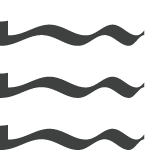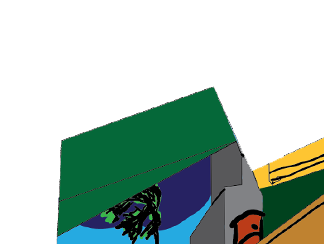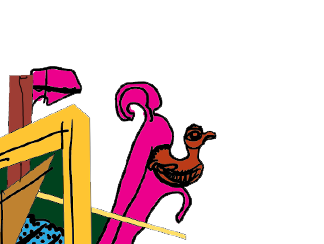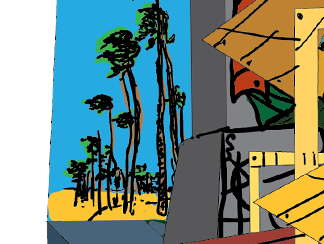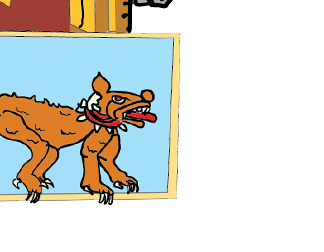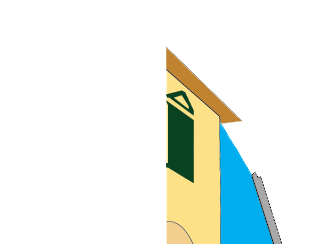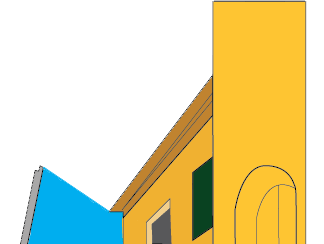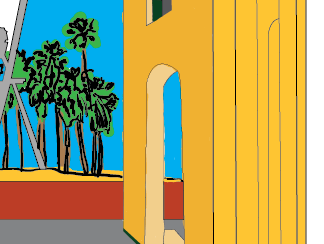Soundscapes of Pandemia: Prologue
1576: In 1576, Franciscan and indigenous scholars at the Colegio de Santa Cruz in Mexico City painted the Historia General de las cosas de la Nueva España amidst a smallpox plague. Friar Bernardino de Sahagún reported: “I buried more than 10,000 bodies and at the end of the epidemic, I caught the illness and was very ill.”1 The 2,000 page Historia (or codex) was written in Spanish and Nahuatl, a pictographic language, and narrates the indigenous cosmology. In this cosmology, Xolotl, word for dog and also the god of the underworld, guided the newly deceased on their voyage. The Xolotl (spirit dog) represented here recalls that first Western plague and is our guide through the soundscapes of pandemia.
1918: Two pandemics ravaged the globe in 1918, the Spanish Influenza and the conclusion of WWI. Soon after enlisting for the army in 1914, Italian artist Giorgio de Chirico began his Metaphysical Interiors series while stationed (rather, convalescing from nervous disorder) in Ferrara. The paintings present claustrophobic still lives composed of drafting tools, pastries and maps rendered in angles that add an architectural grandeur to the quotidian items. The paintings (two of which are digitally remixed here) “take interiority as a point of departure, a site of adventure beginning and ending with the wood that supports the canvas itself.”2 The spirit dog inhabits the interior of diptych one, and then wanders outside in diptych two, where he carries the viewer into part two of this blog post.
2020: In late March 2020 the Coronavirus pandemic began its North American spread, citizens were placed in quarantine, and nature re-emerged. Sounds from a-life, or “pure events freed from the subjectivity and objectivity of what happens”3 filled in where previous vibrations from crowds and cars had congealed into daily pollution. A-life is the vitality concentrated in nonhuman actors, such as minerals, metals, and leaves, some of which were recorded and can now be sounded through the portal.
I created two portals, or a digital diptych inspired by de Chirico’s isolation painting, in which the user can interact with sounds collected from the field by clicking within the images. The criteria for samples included sounds “liberated” by the stillness of quarantine life in Los Angeles. Samples in diptych one, an interior space crammed with objects, include plants, the hum of a machine, the sound of birds in the morning. These images anthropomorphize the sounds; clicking on the dog will activate a dog’s bark, clicking on the bird sculpture will activate the sound of birds as experienced from my window, and clicking on the palm trees will activate the sound of palm leaves furiously whipping in the wind, sampled during the first week of quarantine when the Venice boardwalk was shuttered. In diptych two, the exterior spaces are empty, and the sound “animates” them. For example, the alley space in the lower right corner produces a sound sampled from the Venice beach drum circle after the quarantine was lifted, as if echoing through the alley.
Transitions: In panel two the spirit dog has moved out of enclosure, to a semi-vacant cityscape. The human voice re-enters quarantine life through recitations and music; a-life has started to move to the background. The spirit dog has adopted the mask and will continue to guide the viewer through the global sounds of pandemia in part two of the blog post, a sonic narrative arranged by Lili Flores.
1 Quoted by Franciscan scholar/colonizer Bernardino de Sahagún, from: Miranda, Caroline A. “How a vital record of Mexican indigenous life was created under quarantine” LA Times, March 26, 2020.
2 Merjian, Ara H. “Giorgio De Chirico’s Willful Claustrophilia: The Ferrara Interiors, 1915–18.” The Art Bulletin 101, no. 2 (2019): 54–82. https://doi.org/10.1080/00043079.2019.1527642.
3 Giles Deleuze paraphrased by Jane Bennet in: Bennett, Jane. Vibrant Matter: A Political Ecology of Things. Durham: Duke University Press, 2010. pp, 53
Adam Boggs is an artist, educator and scholar currently studying in the PhD program in Architecture at the University of California-Los Angeles. Previously he received a Rotary International Foundation grant to study at the Pontifical Universidade Catolica- Rio de Janeiro while working in the municipal carnival float atelier. He has taught at Cornell and Syracuse University and currently teaches sculpture at Saddleback College.
2 Merjian, Ara H. “Giorgio De Chirico’s Willful Claustrophilia: The Ferrara Interiors, 1915–18.” The Art Bulletin 101, no. 2 (2019): 54–82. https://doi.org/10.1080/00043079.2019.1527642.
3 Giles Deleuze paraphrased by Jane Bennet in: Bennett, Jane. Vibrant Matter: A Political Ecology of Things. Durham: Duke University Press, 2010. pp, 53
Adam Boggs is an artist, educator and scholar currently studying in the PhD program in Architecture at the University of California-Los Angeles. Previously he received a Rotary International Foundation grant to study at the Pontifical Universidade Catolica- Rio de Janeiro while working in the municipal carnival float atelier. He has taught at Cornell and Syracuse University and currently teaches sculpture at Saddleback College.
